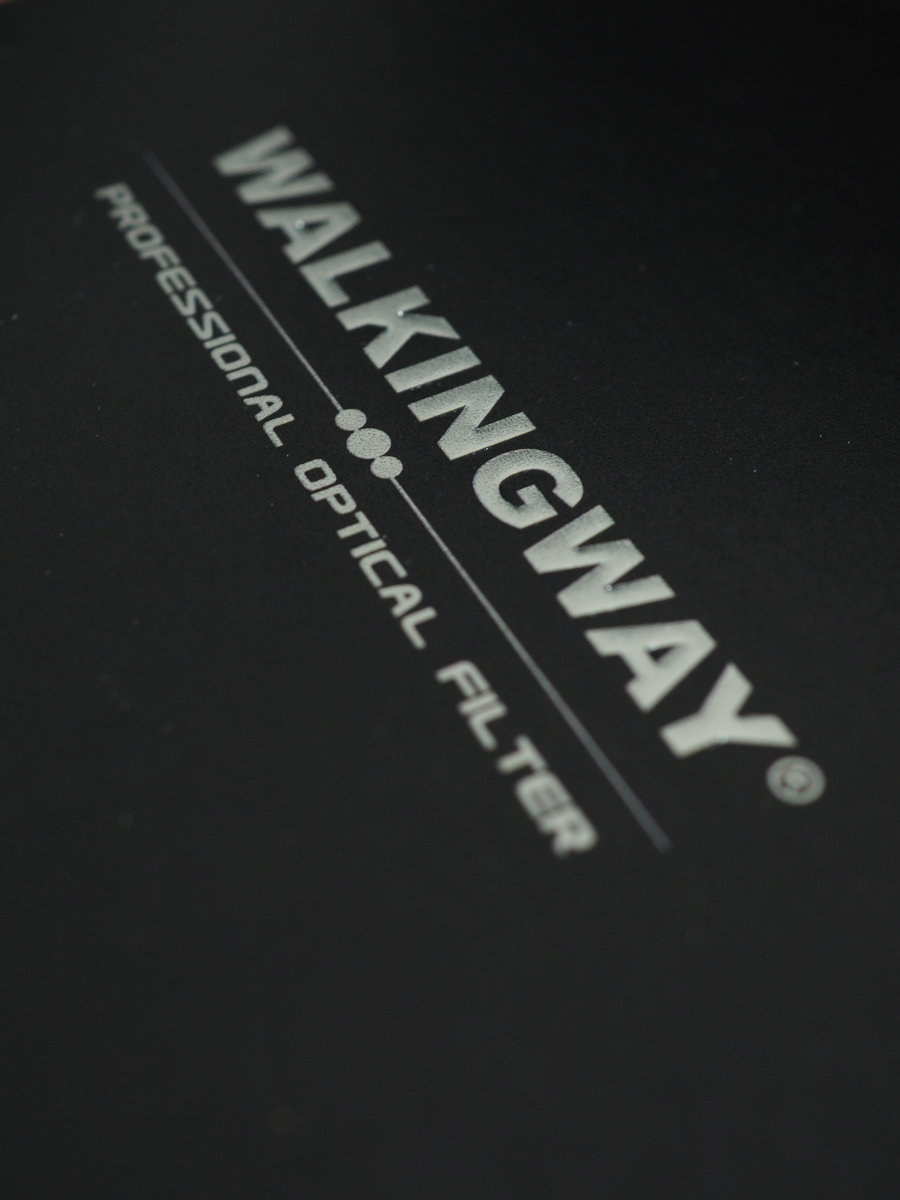
Fotopro Sherpa Max tripod initial review
Review by Dimou Dimitris
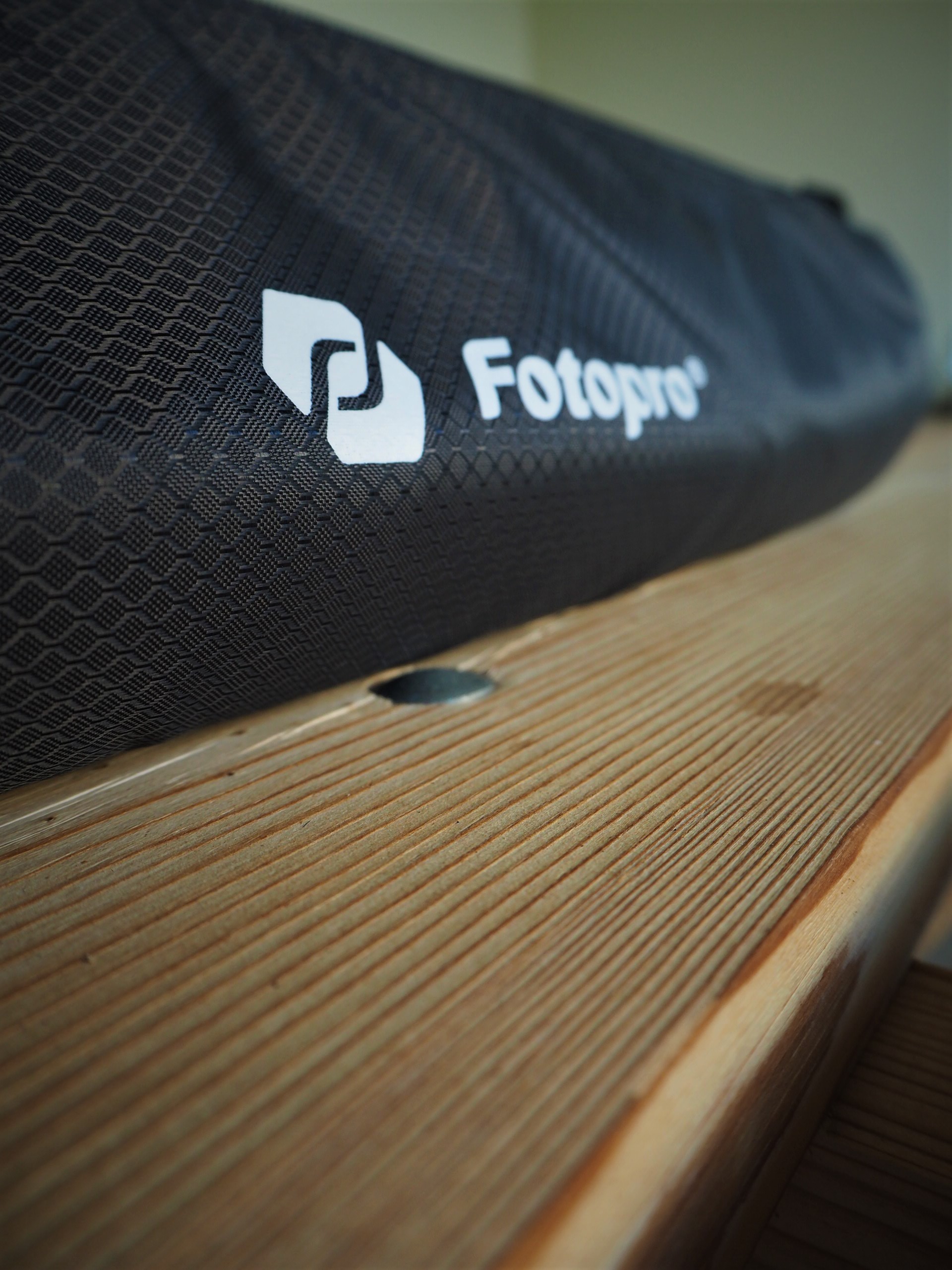
Disclosure
I am a Fotopro Product Experience Officer and this Sherpa Max tripod is provided to me by Fotopro. Despite that, this is an honest review as the company itself, expects from Product Experience Officers to test the products and report potential flaws, problems and bad experiences we might have. So, let’s get into it.
Unboxing & first thoughts

The parcel arrived at my local post office in great packaging and also in great shape. It wasn’t damaged during shipping, which is always a concern. I am not into the unboxing mindset so the best next thing, is to describe what is included. The package contains the tripod itself, a carrying bag which is pleasantly padded, a belt sheath and the user manual.

From the moment I held the tripod in my hands, I could feel that this is a quality product. All the components have a tight fitting with each other, to make a sturdy final product. The legs twist locks have a nice feel to them and need to be turned 90 degrees, give or take, to become loose from their locked state, and vice versa. The ballhead also gives the impression that can handle a fair amount of weight. I have been a long time Arca-Swiss user, so having that type of compatibility right out of the box, is a relief. Coming from an aluminum tripod background, it felt kind of weird to have such a big tripod, weighing so little.
Features & specs
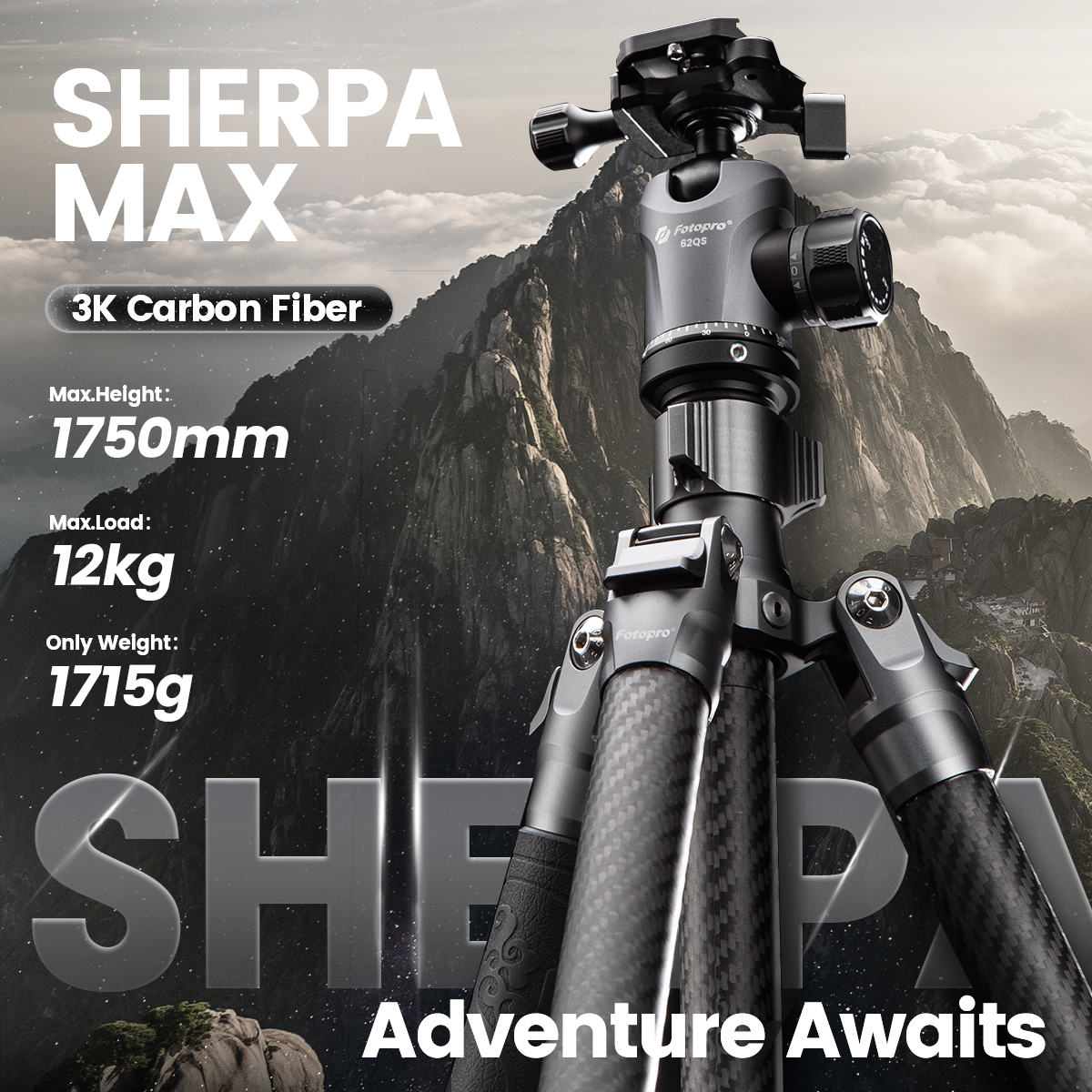 The features and specs can be summarized in just a couple of pictures from the Fotopro Sherpa Max website. But in short, it is a 4 section tripod, with maximum leg tube diameter of 28mm, which has a max height of 1750mm/1451mm (center column extended/retracted) and weighs 1.715 kg. It has a folded length of just 510mm, it can support a weight up to 12 kg and the lowest height achieved is 252mm. It can be converted into a monopod with a max height of 1568.5mm, it has a dual panoramic ballhead with dual spirit level and dual expansion holes for attaching extra gear.
The features and specs can be summarized in just a couple of pictures from the Fotopro Sherpa Max website. But in short, it is a 4 section tripod, with maximum leg tube diameter of 28mm, which has a max height of 1750mm/1451mm (center column extended/retracted) and weighs 1.715 kg. It has a folded length of just 510mm, it can support a weight up to 12 kg and the lowest height achieved is 252mm. It can be converted into a monopod with a max height of 1568.5mm, it has a dual panoramic ballhead with dual spirit level and dual expansion holes for attaching extra gear.
My background
My type of work is mainly landscape photography and videography. Most of the time, this involves a fair amount of hiking and some times camping overnight. So, the lighter the tripod, the better. But the compromise is to have a sturdy tripod, which is lightweight enough. Why do I need a sturdy one then, and not go with the lightest option available?
Because taking a photo lasts a fraction of a second. If that single image is sharp, then you are good to go. But in video things are very different. Even minor composition changes can be spotted by the eye and then the whole shot is ruined as it seems unprofessional. Also when dealing with the elements, wind is the primary concern. High winds are a problem on their own, but having gusts blowing the whole setup is not only annoying, causing blurry pictures or shaky video, but also harmful for your equipment in case of a fall.
In use
- Monopod
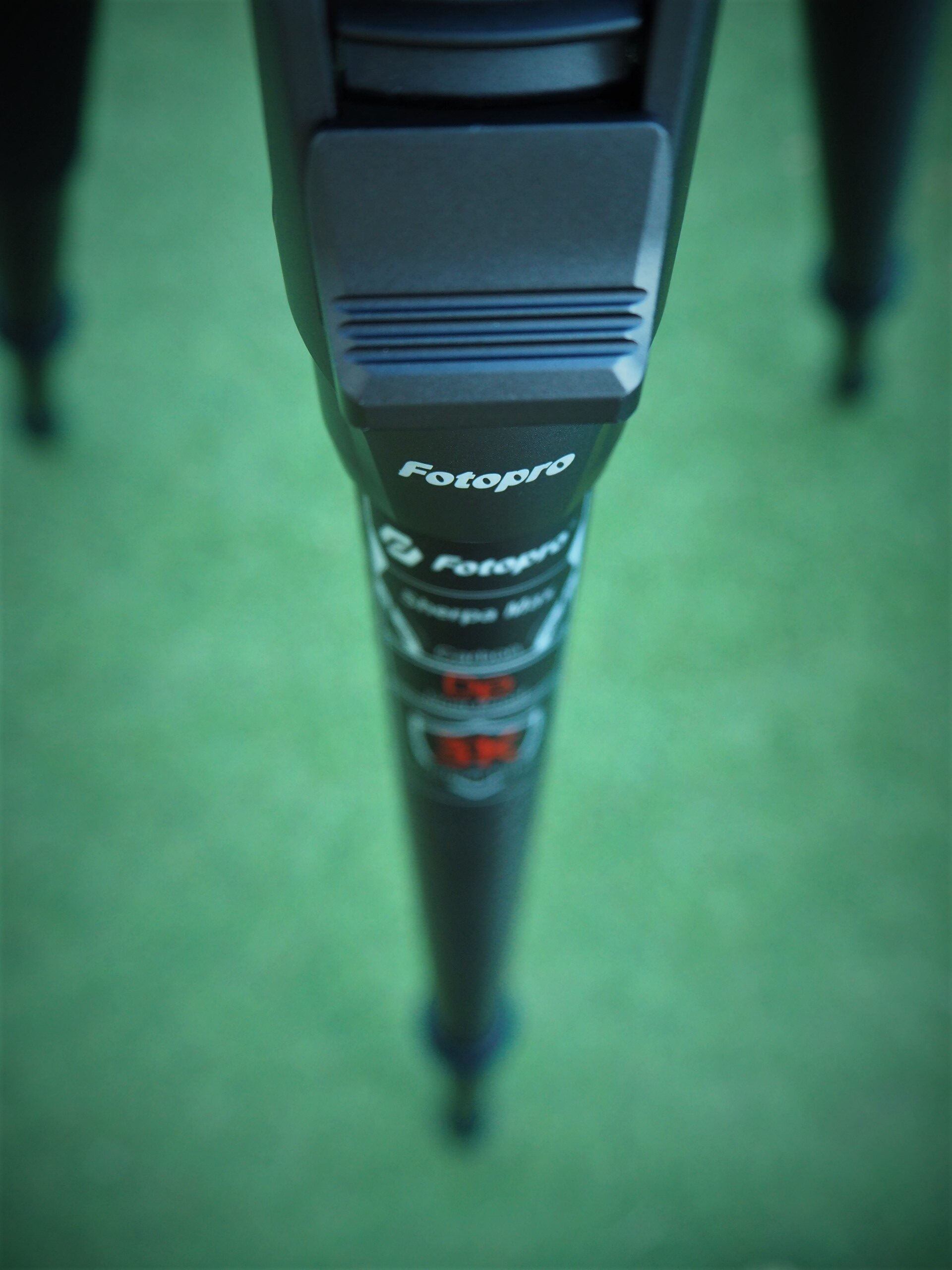 Although I am not a fan of using a monopod, I have found that it provides a sweet spot between handheld and tripod use when shooting stills. In case of high winds, or when light begins to fade, it offers a lighter alternative to the tripod that could work. It is especially useful in cases where the tripod would hardly work. I was hiking lately on a very steep path and the usable space was minimal while ascending. In that case the monopod provided not only the extra stability needed for sharper photos, but also served as a walking stick in some cases. Also I have utilized the monopod while shooting video, on some jib style shots, just to add another interesting camera movement. I would assume that it will be far more useful when shooting with large telephoto lenses, in order to support all that excess weight.
Although I am not a fan of using a monopod, I have found that it provides a sweet spot between handheld and tripod use when shooting stills. In case of high winds, or when light begins to fade, it offers a lighter alternative to the tripod that could work. It is especially useful in cases where the tripod would hardly work. I was hiking lately on a very steep path and the usable space was minimal while ascending. In that case the monopod provided not only the extra stability needed for sharper photos, but also served as a walking stick in some cases. Also I have utilized the monopod while shooting video, on some jib style shots, just to add another interesting camera movement. I would assume that it will be far more useful when shooting with large telephoto lenses, in order to support all that excess weight. - Center column The center column is divided into 2 parts. The upper one is about 10cm long and the lower one is about 30cm long . They are both threaded and they make a solid tube that it is even hard to say, where is the connection spot. This is a very clever design, because in the past I have came across tripods that in order to get low to the ground, you had to change out the long column, to a shorter one, which was time consuming. The lower part also nests the hook, the phone holder and the dual hex wrench. The twist lock is not circular but somehow triangular, and thanks to those 3 points sticking out, it can be easily tightened to secure the weight of the gear mounted on it.
- Included tool/phone holder/hook
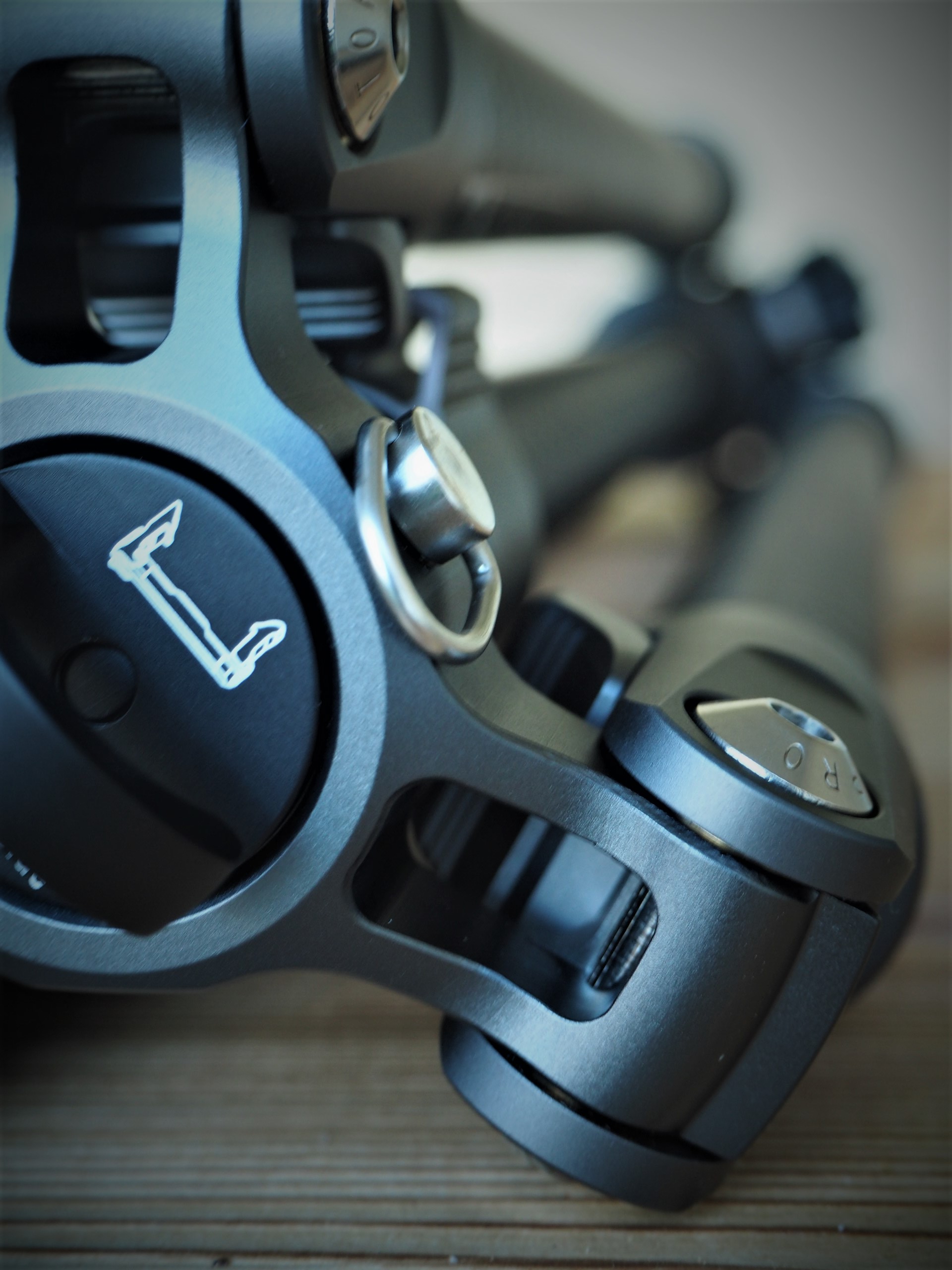 Having a tool to tighten loose screws in the field is essential. When this is included and most important, it can be stowed safely into the tripod and be always with it, is just brilliant. We have always experienced something similar like forgetting a memory card, a battery or a tool at home or in the car. That’s why it is such a great idea to have it integrated into the tripod. The phone holder is a nice alternative in my opinion. A safety net, so to speak, in case something goes wrong with my cameras and I want to use my phone to shoot something. Or in case I want to film myself while working. The hook is self explanatory and also super helpful in windy conditions. You add a weight to it, and you are good to go. As an extra feature the phone holder and the tool combined, can serve as a magic arm, expanding even more the versatility of their existence. An example of that could be the case of a smart phone used as an external monitor.
Having a tool to tighten loose screws in the field is essential. When this is included and most important, it can be stowed safely into the tripod and be always with it, is just brilliant. We have always experienced something similar like forgetting a memory card, a battery or a tool at home or in the car. That’s why it is such a great idea to have it integrated into the tripod. The phone holder is a nice alternative in my opinion. A safety net, so to speak, in case something goes wrong with my cameras and I want to use my phone to shoot something. Or in case I want to film myself while working. The hook is self explanatory and also super helpful in windy conditions. You add a weight to it, and you are good to go. As an extra feature the phone holder and the tool combined, can serve as a magic arm, expanding even more the versatility of their existence. An example of that could be the case of a smart phone used as an external monitor. - Expansion Holes
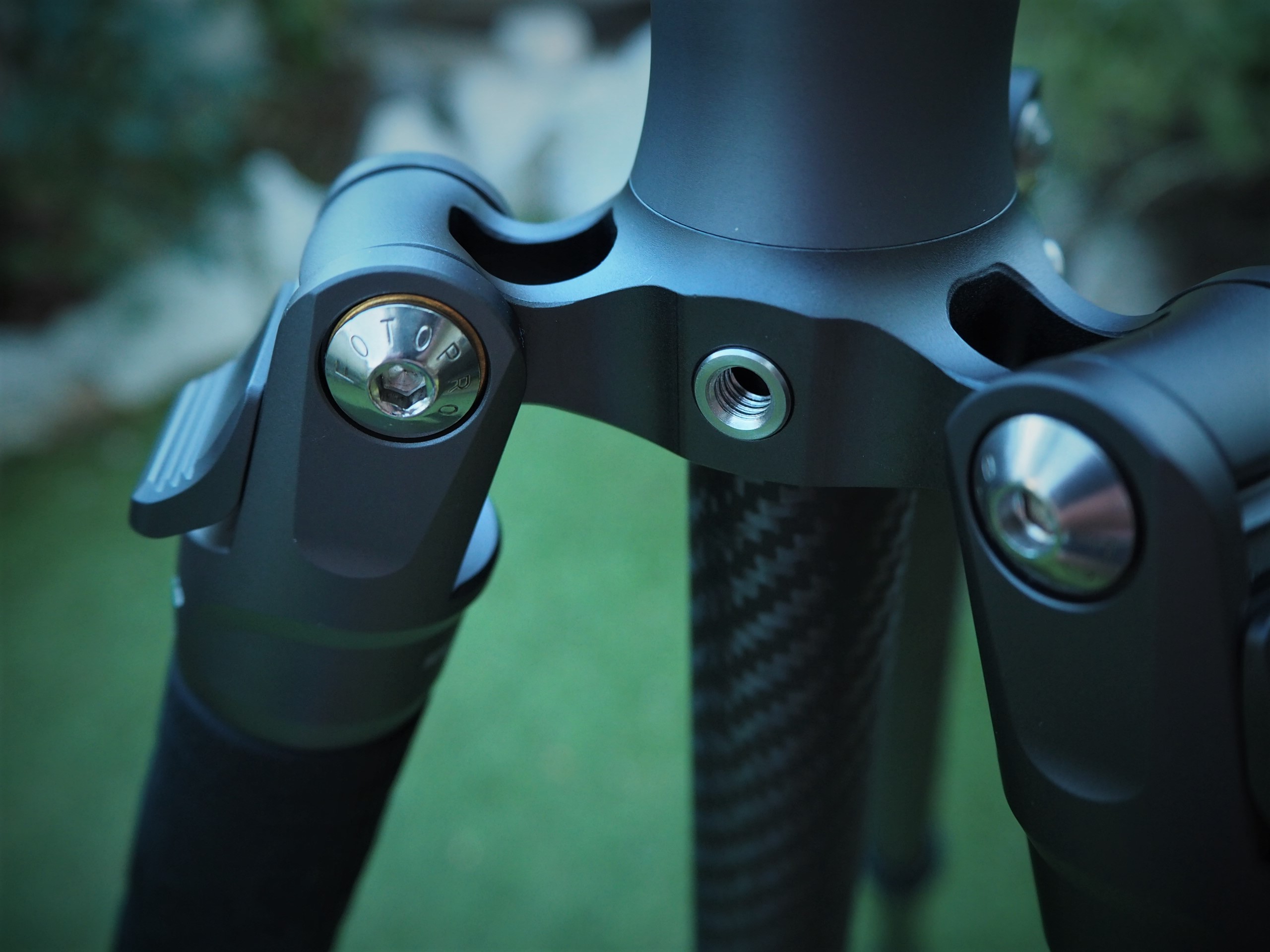 This great addition cannot be praised enough. Having more attachment points on the tripod for more gear is beneficial in so many ways. In case of video you can mount an external monitor, a microphone, an audio recorder etc. In most cases a video setup includes all mentioned above on a cage, which in turn would be mounted on the ballhead. Removing some of the equipment, will reduce mechanical stress, leading to a more pleasant user experience and less wear on the ballhead parts, contributing to the longevity of the tripod itself.
This great addition cannot be praised enough. Having more attachment points on the tripod for more gear is beneficial in so many ways. In case of video you can mount an external monitor, a microphone, an audio recorder etc. In most cases a video setup includes all mentioned above on a cage, which in turn would be mounted on the ballhead. Removing some of the equipment, will reduce mechanical stress, leading to a more pleasant user experience and less wear on the ballhead parts, contributing to the longevity of the tripod itself. - Weight The weight is great when you consider the size of the tripod. Neither it is so heavy to become a burden, nor it is so lightweight to feel inadequate. It just feels right by the time you get it in your hands. On daytrips and short hikes it has not been difficult to manage the weight on my backpack or carrying it around in my hands. I have plans to test it extensively on an overnight in the coming weeks and I will come back with an update if needed. The thing that struck me the most is the feel you get when handholding it though. Being such a big tripod, it is just so light, it is somehow hard to process it.
- Stability
 This is a huge one, because it is the primary reason someone gets a tripod in the first place. From my initial tests I have seen that it stiff and has not any loose parts whatsoever. All the leg sections fit properly, each one inside the other, providing a snug fit. The center column also when extended, can be tightened, without making the user worry. For maximum stability though, the recipe that is truly tested, is to extend the legs, starting with the sections having the larger diameter first and when reaching full height but still want more, then extend the center column.
This is a huge one, because it is the primary reason someone gets a tripod in the first place. From my initial tests I have seen that it stiff and has not any loose parts whatsoever. All the leg sections fit properly, each one inside the other, providing a snug fit. The center column also when extended, can be tightened, without making the user worry. For maximum stability though, the recipe that is truly tested, is to extend the legs, starting with the sections having the larger diameter first and when reaching full height but still want more, then extend the center column. - Carbon fiber The Sherpa Max, being a carbon fiber tripod, has an excellent weight, considering its’ size. Although carbon fibers used to be an exotic material a few years ago, this is not the case anymore. Nowadays it has become more economical to produce and its’ fields of applications has expanded. Due to its carbon fiber construction, I would probably say it has almost the weight of an aluminum one or even two size smaller. What I mean by size, is actually the largest leg diameter of the tripod. A carbon fiber tripod with 28mm leg diameter, almost equals in weight an aluminum one with 25mm or even 22mm leg diameter. Thus with the Sherpa Max, I can have a far more stable platform, while carrying the same or less weight on my back.
- Ballhead
 The ballhead has the amazing dual panorama feature, which I am really excited about. What this means that it can rotate on the transverse plane, even when the tripod legs are tilted. This could not be done with a classic ballhead. The only workaround are the bowl leveling bases found on larger and heavier tripods that are far more expensive. So in simple words, when shooting on a slope and the tripod legs are tilted, as long as you have leveled the camera, the Arca-Swiss clamp base can be rotated and shoot panorama or pan for video, while maintaining the horizon level. Despite this feature which got me so excited, it is very well made and has a ball diameter of 36mm. This is an average size, in the medium sized ballhead category. Although I am Micro Four Thirds shooter, which is by definition a lightweight format, having a ballhead that provides a firm grip is always welcome. It also doesn’t take long for a camera setup to skyrocket in weight, especially when shooting video. A camera cage, an external audio recorder with or without a mic, a camera monitor, a video light etc can quickly add up. And in an weird way, which makes the center of gravity potentially shift and that’s the whole problem. That’s why Fotopro tripods are tested the way the do, by moving the weight away from the vertical axis of the tripod (video). So, I would rather carry a heavier and bigger ballhead, for the added stability, than a lighter one that would require excessive tightening and wouldn’t provide enough support for my camera setup.
The ballhead has the amazing dual panorama feature, which I am really excited about. What this means that it can rotate on the transverse plane, even when the tripod legs are tilted. This could not be done with a classic ballhead. The only workaround are the bowl leveling bases found on larger and heavier tripods that are far more expensive. So in simple words, when shooting on a slope and the tripod legs are tilted, as long as you have leveled the camera, the Arca-Swiss clamp base can be rotated and shoot panorama or pan for video, while maintaining the horizon level. Despite this feature which got me so excited, it is very well made and has a ball diameter of 36mm. This is an average size, in the medium sized ballhead category. Although I am Micro Four Thirds shooter, which is by definition a lightweight format, having a ballhead that provides a firm grip is always welcome. It also doesn’t take long for a camera setup to skyrocket in weight, especially when shooting video. A camera cage, an external audio recorder with or without a mic, a camera monitor, a video light etc can quickly add up. And in an weird way, which makes the center of gravity potentially shift and that’s the whole problem. That’s why Fotopro tripods are tested the way the do, by moving the weight away from the vertical axis of the tripod (video). So, I would rather carry a heavier and bigger ballhead, for the added stability, than a lighter one that would require excessive tightening and wouldn’t provide enough support for my camera setup. - Spikes/ rubber feet
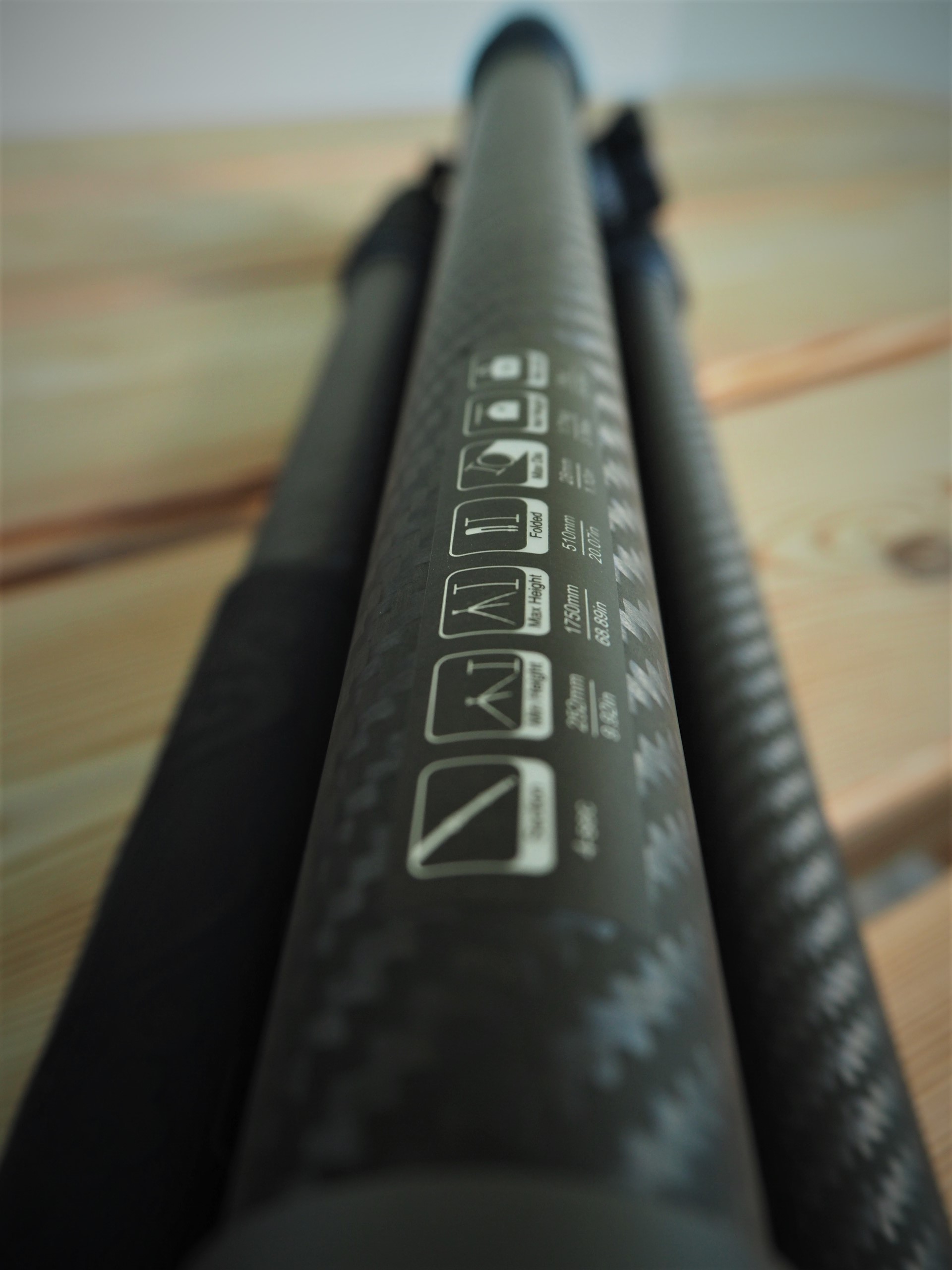 I like the fact that the spikes are part of the legs and the rubber feet are just caps. I have used tripods in the past that both spikes and rubber feet were screwed on. I had punctured a backpack once because of being lazy, not wanting to unscrew the spikes. In might seem minor, but it is such a simple setup that should be kind of a standard.
I like the fact that the spikes are part of the legs and the rubber feet are just caps. I have used tripods in the past that both spikes and rubber feet were screwed on. I had punctured a backpack once because of being lazy, not wanting to unscrew the spikes. In might seem minor, but it is such a simple setup that should be kind of a standard. - Sandproofness/waterproofness I don’t actively test the sandproofness or waterproofness of tripods or other products. In my mind this is within the region of torture tests. Something like trying to see how far is that barrier, that the product successfully works as designed. But this is so close to the failure point, that I do not want deliberately to cross. If need be, I will sink it in water and sand, but until then I have no valuable information on that.
- Stills and video
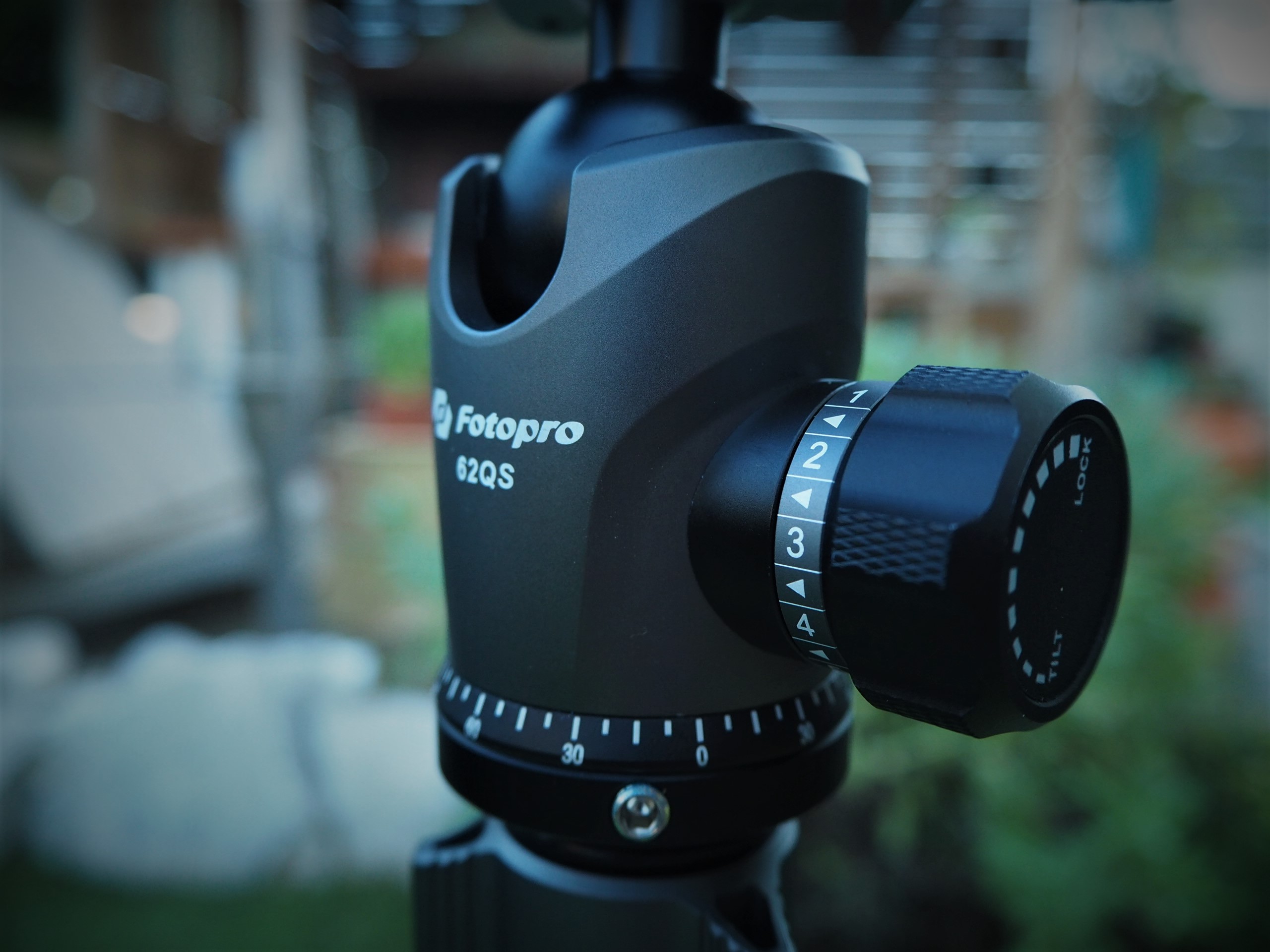 So far I have great results with my photography as a whole, but let me dive into some details. Even when mounted on a tripod, the camera can slightly move even when pressing the shutter button, if you are not shooting with a remote shutter. It can even introduce shutter shock in case you don’t use the electronic shutter, if your camera has that feature included. This is not very noticeable when shooting wide, but with longer lenses it becomes more and more prominent. I found that even in the short telephoto range, the tripod itself was stable enough and produced sharp photos consistently. When entering the super telephoto range, things become more challenging and although not impossible to shoot sharp images, there are definitely less keeper photos, so the remote shutter and electronic shutter should come into play. When it comes to video work, the tripod is great even in the most basic setup. In case you shoot in windy conditions, spreading the legs, lowering the total height and even adding a weight to the included hook, will further increase the stability provided. Although I shot in mild wind, I am looking forward shooting in more extreme conditions and I will come back with an update.
So far I have great results with my photography as a whole, but let me dive into some details. Even when mounted on a tripod, the camera can slightly move even when pressing the shutter button, if you are not shooting with a remote shutter. It can even introduce shutter shock in case you don’t use the electronic shutter, if your camera has that feature included. This is not very noticeable when shooting wide, but with longer lenses it becomes more and more prominent. I found that even in the short telephoto range, the tripod itself was stable enough and produced sharp photos consistently. When entering the super telephoto range, things become more challenging and although not impossible to shoot sharp images, there are definitely less keeper photos, so the remote shutter and electronic shutter should come into play. When it comes to video work, the tripod is great even in the most basic setup. In case you shoot in windy conditions, spreading the legs, lowering the total height and even adding a weight to the included hook, will further increase the stability provided. Although I shot in mild wind, I am looking forward shooting in more extreme conditions and I will come back with an update. - Attention to details
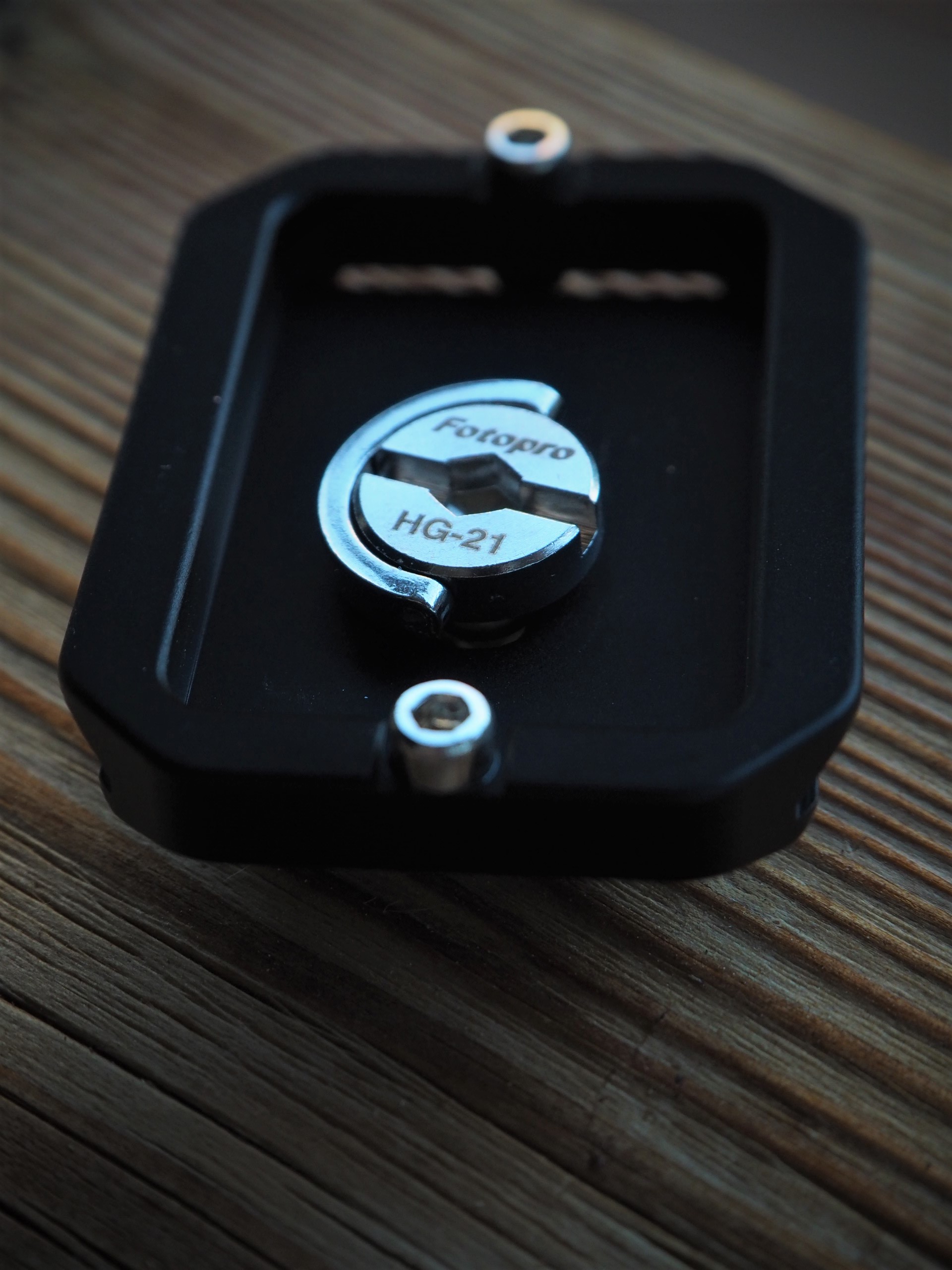 If all mentioned above wasn’t enough to convince someone about the quality of this tripod, there are even more details to support that. I do not recall having seen any other product, using marked screws on it. This one does. And this supports my statement that it is a premium product. Also, the Arca-Swiss plate screw, is marked as well. Even the humblest part is treated as a premium one, making a truly superb final product.
If all mentioned above wasn’t enough to convince someone about the quality of this tripod, there are even more details to support that. I do not recall having seen any other product, using marked screws on it. This one does. And this supports my statement that it is a premium product. Also, the Arca-Swiss plate screw, is marked as well. Even the humblest part is treated as a premium one, making a truly superb final product. - Studio work Portraiture Although I mostly shoot landscape photography, I consistently shoot inside a studio portraits, headshots, products and macro. In the past, I didn’t use to shoot portraits and headshots with a tripod. But after a while I found that I could have consistency to my cameras’ height when using one. It is annoying to deliver images, and some of them have been shot down on the subject and others have been shot up. In those cases I find the Sherpa Max to have plenty of reach, even for my taller clients. That fact also gives me the option not to make them sit, and make their posture either uncomfortable, or worse for the final picture. The ballhead also performs flawlessly in this task when minor adjustments are needed to be made on the fly.
- Studio work macro/product
 When shooting products or macro in studio, the tripod is rock solid making easy to focus stack in case you need to. That’s the first impression I had when I used it. Adding a horizontal center column, like the Fotopro HRC-02, will further expand the usability of the tripod for these specific applications. In studio, conditions are less challenging than the great outdoors, so nothing will make you uncomfortable when shooting indoors.
When shooting products or macro in studio, the tripod is rock solid making easy to focus stack in case you need to. That’s the first impression I had when I used it. Adding a horizontal center column, like the Fotopro HRC-02, will further expand the usability of the tripod for these specific applications. In studio, conditions are less challenging than the great outdoors, so nothing will make you uncomfortable when shooting indoors.
Summary

Up until now I have no complaints using the Sherpa Max. Time will surely tell, and I will come back with an update, if something gives me a hard time. I can tell for sure, that for the type of shooting I do, it is a great choice. It is lightweight enough to be transported on my backpack, yet it has all the stability I will need in 99% of cases. The extended height range, gives me a plethora of options. From shooting really low, macro, insects etc, to getting higher than the vegetation out in the field, which can be annoying at times. Attention has been given, even to the smallest detail and the build quality is great and I think it will provide a stress free shooting experience for a long time. So if you don’t have very specific needs, ie supporting a cinema camera, or looking for the lightest tripod available, the Sherpa Max is your best choice. Or maybe another one from the Sherpa product line.

